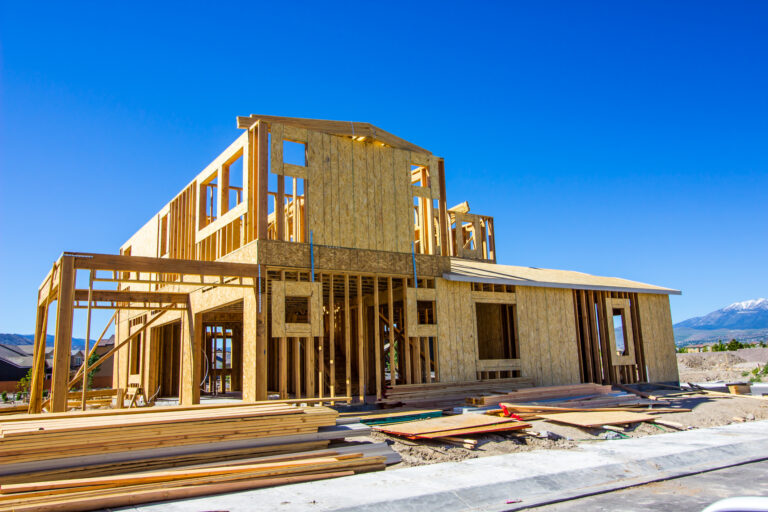This Week in Real Estate – 19th February 2022

Brisbane Units Have Big Potential
Developers have declared Brisbane’s apartment market as having more potential than any other.
Mosaic Property Group founder Brook Monahan is planning to invest further in the inner-ring suburbs of Brisbane on the back of its potential.
He says there are not enough high-quality apartments available for owner occupiers who are looking for bigger units with plenty of amenity within 5km of the Brisbane CBD.
“That issue is getting worse, not better, with the amount of people still moving to Brisbane,” he says.
Australian Bureau of Statistics figures show 7,000 people moved from interstate to Brisbane in the March 2021 Quarter alone.
“With the amount of infrastructure being delivered across the city, not to mention international travel getting back to normal at some point this year and the pipeline of development in preparation for the 2032 Summer Olympics, there is just nowhere near enough housing stock in Brisbane,” Monahan says.
Mosaic will launch five Brisbane projects in 2022.
School’s In For Gold Coast Market
Gold Coast parents seeking to send their children to high achieving government schools are driving up surrounding house prices.
Real Estate Institute of Queensland analysis of median house price data in top school catchment areas shows median prices around suburbs with higher-ranked schools – including Varsity College, Benowa and Southport State High School on the Gold Coast – are on the way up. House prices in Varsity Lakes increased 18.6% in the past 12 months, Benowa increased 21.4% and Southport increased 21.2%.
LJ Hooker Property Hub agent Mitch Harrop says the Varsity College catchment zone is in hot demand among buyers.
“Every week people are calling me specifically to get into the catchment area here,” he says.
According to rankings by Better Schools, top primary schools on the Gold Coast are Beechmont, Broadbeach and Tallebudgera state schools.Beechmont’s median house price increased 13.4%, Broadbeach Waters increased 19.5% and Tallebudgera increased 19.2% in the past 12 months.
Rental Vacancy Rates Hit 16yr Low
Vacancy rates continue to fall throughout Australia, with the national average rate hitting a 16-year low.
SQM Research reveals nationally the vacancy rate dropped to 1.3%, down by 0.3% during January. It puts the total number of vacant properties in Australia at just 47,977, down from 71,303 a year ago.
Vacancies in Perth, Adelaide, Canberra, Darwin and Hobart remain below 1%, while Brisbane is 1.1%, Sydney 2.1% and Melbourne 2.7%.
While vacancy rates in big city CBD markets remain higher, they also reduced during January to 4.5% in the Sydney CBD and 4% in the Melbourne CBD.
SQM managing director Louis Christopher predicts CBD rates will continue to fall as many staff return to offices in coming months. “We were expecting a drop in rental vacancies over January due to seasonality, however the drops were larger than expected,” he says.
Christopher says the shortage of rental properties is causing rent increases and he predicts rents will rise a further 10% this year.
House Prices Will Weather Rate Rise
Bendigo & Adelaide Bank has joined the chorus of banks predicting an interest rate rise before the end of 2022, but expects property prices to continue rising.
Managing director Marnie Baker predicts there will be further rate increases in 2023 and says the property market is well placed to handle the change.
Baker told The Australian that the bank is “very much leveraged to a rising cash rate environment”.
“Rate rises are becoming more likely as the data that’s dropping supports that view, along with the comments that are coming from the Reserve Bank,” she says.
Baker predicts continued property price increases although not at the same levels as in the past couple of years.
“There’s still scope, both in regional and metropolitan areas, for further price increases there,” she says.
In the December half year, Bendigo grew its share of the residential lending market and posted a cash profit of $260.7 million, with income up 2.9% to $873.4 million.
Building Cost Rises Impact Prices
Property prices are tipped to increase further as builders are hit with the biggest surge in construction costs in 16 years.
Nationally building costs increased by 7.3% last year, the highest annual increase since 2005.
CoreLogic warns that this could result in home prices and renovation costs continuing to rise in 2022.
Head of research Tim Lawless expects price growth to remain above average in the coming months, as a result of continued supply chain disruptions and above-average demand for new homes.
Demand for housing increased substantially during the pandemic as a result of the Federal Governments’ HomeBuilder grant with a significant amount of work in the pipeline.
“With some materials such as timber and metal products reportedly remaining in short supply, there is the possibility some residential projects will be delayed or run over budget,” Lawless says.
The biggest cost increases were in Western Australia and South Australia (7.9 %), followed by Queensland (7.3%), Victoria (7.1%) and NSW (7%).









